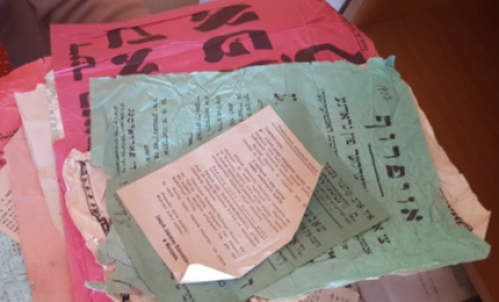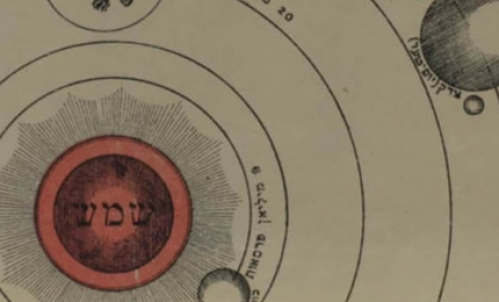Scraps of Paper Illuminate Life As It Was Lived
by ROBERTA NEWMAN
When we think of Jewish history, most of us don’t tend to think about the more mundane aspects of daily life. Yet perhaps we should, in order to have as full an understanding as possible about the context for the “big things”: the intellectual, spiritual, and cultural accomplishments; the political ideologies and parties; and tragic or dramatic events that, when taken together, make up the narrative of Jewish history.
The organizational records in the YIVO Vilna collections are, of course, a solid source of information about how communal life was structured in the Jewish communities of Eastern Europe in the 19th and early 20th centuries. There are entire collections of records documenting the work of Jewish educational, religious, and cultural organizations, and fragments attesting to the existence of hundreds more, scattered in cities and towns across the Poland, the Baltic countries, Russia, Ukraine, and even in central and western Europe.
But these collections also contain bits and pieces that illuminate the daily lives of the Jews who belonged to, were active in, or benefited from the organizations. An example of this are the records of VILBIG (Record Group 11), recently digitized by YIVO for the Vilna Collections Project.
The Vilner Yidisher Bildung Gezelshaft (Vilna Jewish Education Society). VILBIG was organized in Vilna (Wilno), Poland (now Vilnius, Lithuania) in 1924 to foster general education and vocational training among the Yiddish-speaking Jewish population in the Vilna region and to enrich the cultural life of the Jewish masses. Because of lack of funds, it never succeeded in opening schools, except for a short-lived seminary for kindergarten teachers, but did manage to launch adult-education courses and lectures, a well-regarded choir and a mandolin orchestra, and educational trips to other towns and cities. It maintained a "Children's Auditorium" and in 1927 it organized a Scout Club "Bin" (The Bee).
This humble piece of paper, a 1926 application for a place in the VILBIG choir, is testament to the hunger for a life of art and culture on the part of ordinary, young Jews. Yoysef Khonenkind, the 21-year-old man who filled out this form, was not a member of the Jewish elite, but a humble gaiter-stitcher who pledged to “punctually attend all rehearsals.”
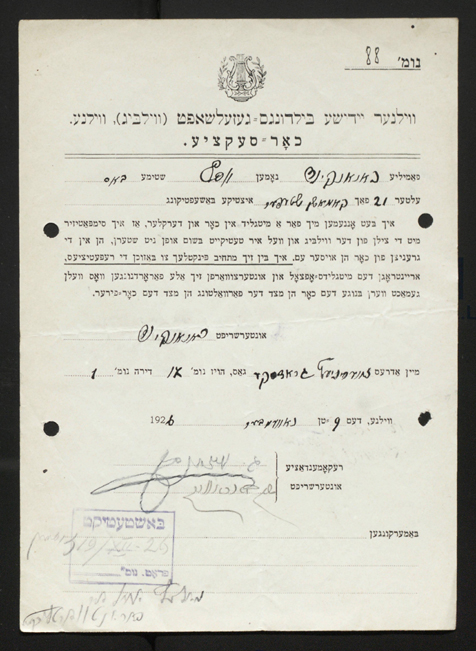
VILBIG was a membership organization. Its main sources of income were membership dues, fundraising campaigns, and sales of tickets to various VILBIG events. It had an average annual budget of about 22,000 zlotys (about $5,500, pre-1939 value). The 1929 appeal below asks ordinary people to form “furniture circles” help raise funds to outfit a library. The organization did not, on its own, have the resources to pay for “tables, chairs, and bookshelves.”
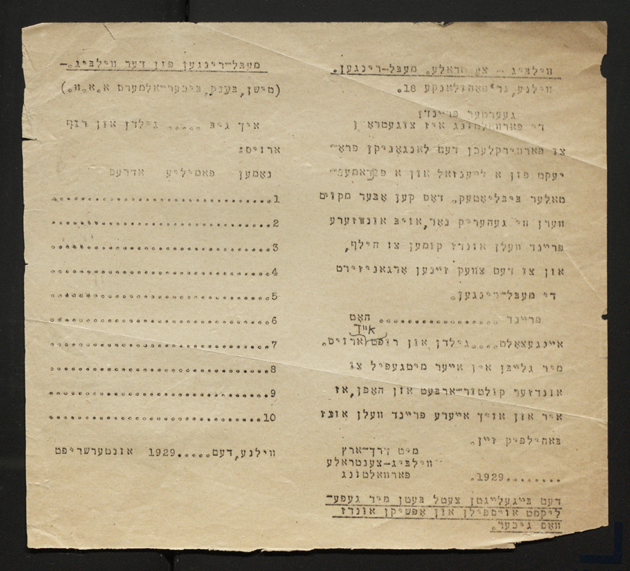
VILBIG’s records include data about the organization’s finances, including invoices and receipts. This particular receipt is for sausages purchased for an event or party. On its back is an ad that sheds light on Jewish economic life. Moshe Tajc’s wurst factory in the Jewish quarter, “the best wurst in Vilna,” established in 1900, welcomed “orders both domestic and from abroad.”
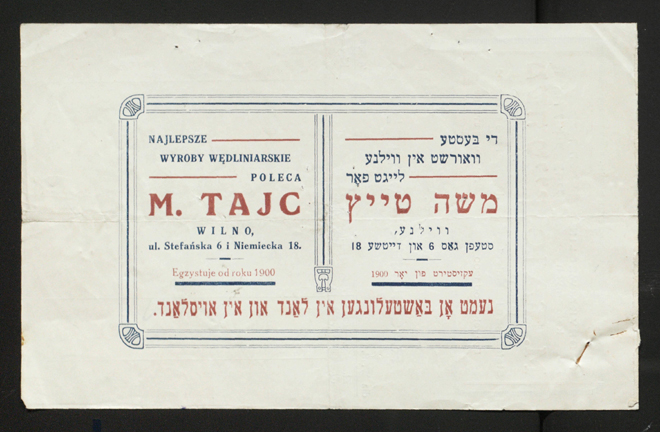
At the peak of its popularity, in 1929, VILBIG had 20 branches in the provincial towns. By 1936, though, the branches had either closed down or changed their organizational affiliation. After the Soviet invasion of Vilna, the VILBIG continued its work for a while. It changed its name to "Bildungs Gezelshaft-Shtern" (Star Education Society), and it offered language courses in Russian and Lithuanian. The society ceased to exist when the Nazis occupied Vilna in June 1941.
Roberta Newman is YIVO’s Director of Digital Initiatives.
